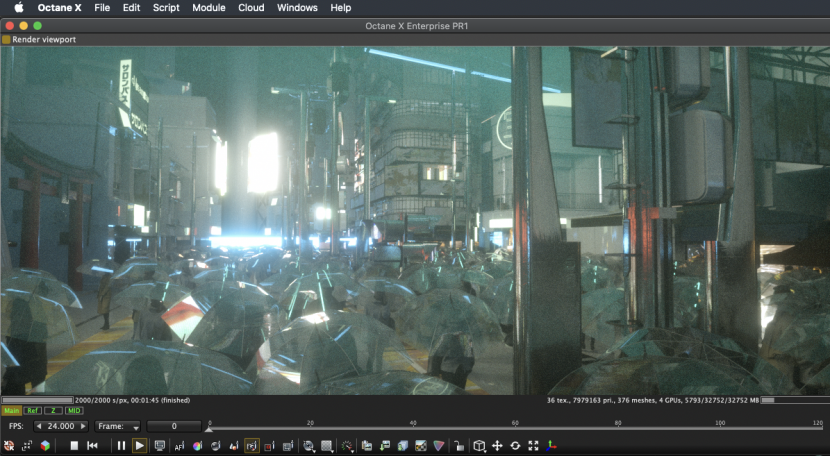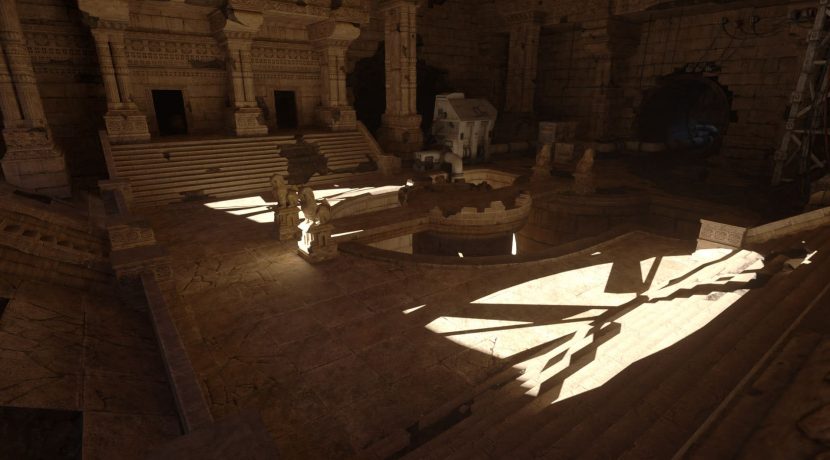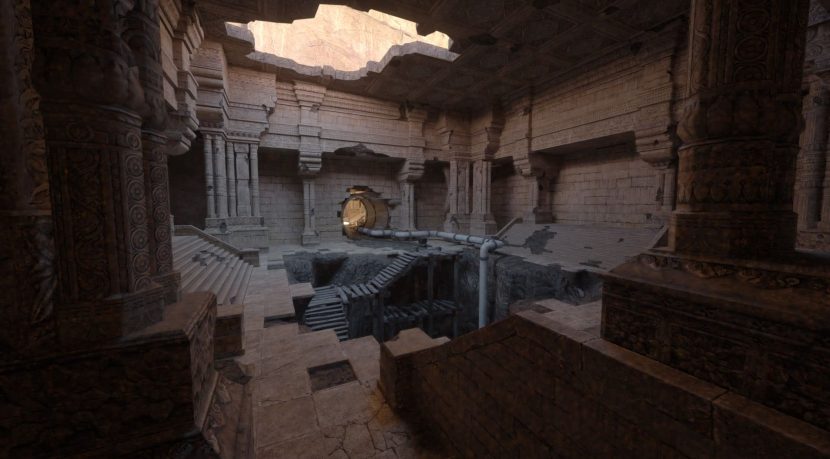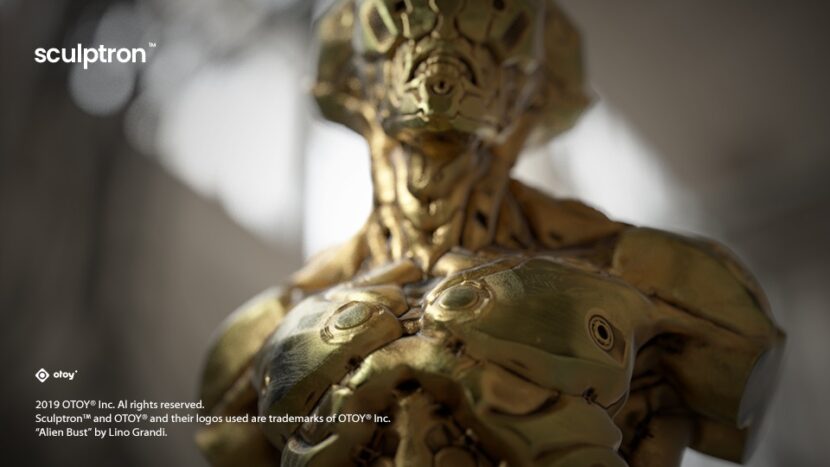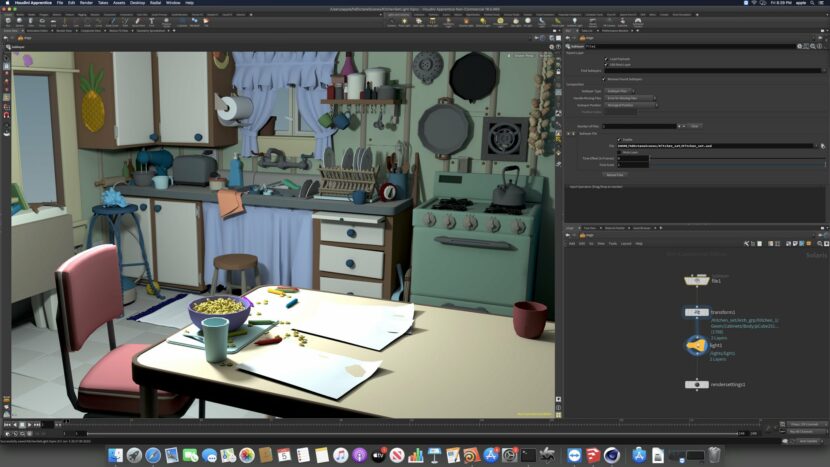Apple has been working with OTOY to bring the Octane X to Professional Mac users since last year’s WWDC. OTOY has now released the Octane X for macOS, it is an unbiased GPU renderer which will allow millions of Macs powered by Apple’s Metal graphics technology to deliver incredibly fast ray tracing. This is significant for many reasons, but as Apple hardware does not support Nvidia RTX, there is a real demand for GPU ray tracing on the Mac. Octane X is fully compatible with macOS Catalina and will be available for free for new users on Macs with the release of macOS Big Sur coming this fall.
The original OctaneRender kicked off somewhat of a rendering revolution in 2010 – introducing the first unbiased GPU render engine. It aims to follow the laws of physics and light precisely. Octane enables artists to create photoreal CG in real-time, that matches a real camera. This is key to Director of Photography Claudio Miranda. We spoke to the Academy Award-winning DOP Claudio Miranda, who is just finishing filming Top Gun: Maverick as well as Jules Urbach the CEO, of OTOY.
Claudio Miranda
 Claudio Miranda became known for films such as The Curious Case of Benjamin Button (2008), Life of Pi(2012) and his collaborations with American director Joseph Kosinski, acting as cinematographer for all of his movies including this latest Top Gun: Maverick film.
Claudio Miranda became known for films such as The Curious Case of Benjamin Button (2008), Life of Pi(2012) and his collaborations with American director Joseph Kosinski, acting as cinematographer for all of his movies including this latest Top Gun: Maverick film.
On his film projects, Miranda gets a digital copy of the sets from the Art Department which may be in Sketch format or a CAD file. He then converts this to Cinema 4D on his Mac, and “I will attempt to light it,” he explains. For example, if he has to light a studio scene as an exterior he will “see if we have enough throw from the walls to make a realistic sun. The great thing is that since it’s a physically-based render that I can use physically based lights which gives me kind of an idea of what’s possible”. During these explorations of the set with Octane renders from C4D Miranda will make decisions on where the lights need to be and the layout of the sets in the sound stage.
“It just helps me see if problems are gonna arise. On my movie right now I’m using Octane, and we are playing with some skylights, making them larger and smaller and working ‘live’ you can see how the skylight is filling the room with more light”. This exploration is possible as Octane is both rendering the way light actually works and doing so interactively. “It’s nice being able to render it live feed and just zoom out or change the size, or color or anything” he adds. While Miranda does not claim to be any type of 3D expert or use the tools for final shots, but he says that he is now “getting far better results than I used to…and it definitely gives us a great idea of the lighting for the movie.”
Miranda primarily uses a fully loaded Mac Pro, “with two high-end graphics cards in there, …with 384 Gig of RAM and it’s got the two of the best processor and the afterburner, with 28 core Intel Xeon processor, so it does pretty much fly, but even with all that power I had, just rendering on the CPU was still sluggish, but now (using Octane) it is fully functioning and using the GPU and the full thing”.He also recently got a new a MacBookPro 16 inch fully loaded for when he is on the move “and Octane runs great on it,’ he commented. This is no surprise as the majority of Apple Octane users are running Octane on a MacBook Pro.
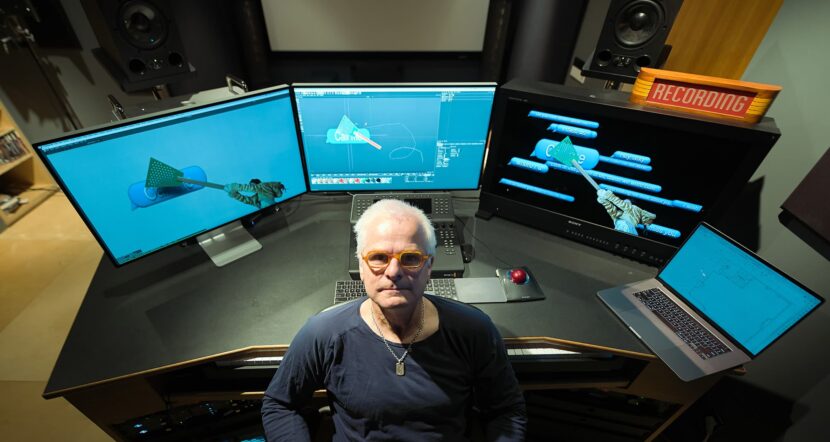
What benefits Miranda is the speed of being able to experiment with physically-based lighting and personally explore options. For example, he says, if I want to add a little bit of atmosphere and then you quickly can and just adjust it on the slider and to see how the volumetrics work… it’s super intuitively fast to see it, and be able to adjust on the fly.” When we spoke there was a break in the production of Maverick and Miranda was doing some experimentation for his next film Spiderhead.
After Top Gun: Maverick, Joseph Kosinski’s next film is Netflix’s Spiderhead, a sci-fi film by Deadpool and Zombieland screenwriters Rhett Reese and Paul Wernick. The film is to be shot in Australia and Miranda is once again Kosinski’s DOP. The film is based on a George Saunders short story, Spiderhead focuses on convicts in the near-future who agree to become test subjects for scientific experiments in exchange for reduced prison sentences.
“In Spiderhead there’s a night scene and I wanted to show the director how I want to light the scene potentially with more pin spotlights,” he comments. “We will be shooting anamorphic, so I was able to add some spots and then use a little post-processing to add a little flare to it and to give it that anamorphic look, in a very simple way.” Away from features Miranda also uses it when he shoots TV commercials. He finds that if he can produce images that really illustrate what he wants to do then it is easier to sell the idea not only to the director but to the commercial’s client, “they have something hard to look at, rather than just basing their decision on something that is all theoretical.”
Miranda actually started using computers to investigate using 3D to explore shots, many years ago, initially with Director David Fincher using Strata 3D. “I got tired of that, and I upgraded to Vectorworks, cause my crew works in Vectorworks when they design set layouts, but Vectorworks was never really a great lighting tool,” he adds. He then moved to Cinema 4D, as we wanted more accuracy in lighting and realism with the 3D lenses. “I got excited when I learned about Octane was going to be made for the Mac, because all my work is done on a Mac.” Miranda uses his Mac Pro not only with Octane but also he uses a host of other programs such as DaVinci Resolve, “it’s a platform I’m very comfortable with,” he points out. “I use it for film and presentations,” he finishes by saying. “If you have an idea you want to get across to the director, it’s easy to sketch something out and say, ‘wouldn’t it be great if the window is this small and we have some volume, with a little bit of atmosphere here, or you want to do some projections on the wall and have rain that is making a caustic effect, …I’m not perfect at it, but I can quickly get an idea across of like how cool it would be”.
When the Octane X was introduced to the world during the opening keynote at Apple’s 2019 Worldwide Developer Conference it created a lot of interest, and the first public preview (PR1) of Octane X for macOS Catalina 10.15.6, does not disappoint. It is completely rebuilt from the ground up using Apple’s Metal Graphics API, and fully optimized for performance on AMD Vega and Navi GPUs across the Mac Pro, iMac Pro, iMac and MacBook Pro product lines.
Octane on Mac Pro
As Octane has been completely rewritten its mesh geometry engine is optimized for AMD GPUs, and supports hundreds of millions of unique primitives per mesh instance, at high performance. It has near perfect linear scaling of rendering speed with multiple GPU configurations, including eGPUs connected over Thunderbolt 3 in the Mac.
Octane X as anRNDR server on a Mac Pro can act as a render node: Leveraging 20Gb/s dual interconnect and the Mac Pro approaches InfiniBand interconnect speeds. The Octane X on Mac Pro will support up to 400 GPUs over network rendering. At the high end, 56 Xeon CPU threads with up to 1.5TB of out-of-core memory surpasses (by far) the maximum scene capacity available on even the most expensive GPU rendering nodes on the public cloud.
Jules Urbach
“Like so many Octane artists, I began my journey in computer graphics on the Mac,” said Jules Urbach, CEO of OTOY. “I started OTOY to democratize content creation, imagining that artists might one day render 3D graphics at the same fidelity as Hollywood blockbusters – but on any budget, in real-time and from anywhere in the world. Integrating OTOY’s rendering technology natively on Apple hardware, and empowering hundreds of millions of potential new creators, is a huge step towards realizing this dream – one we’ve been working on for nearly a decade to make happen here at OTOY.”
Octane X features over a dozen integrated plug-ins for the most popular macOS 3D content creation tools in motion graphics, design, product visualization, and VFX – including Maxon Cinema 4D, SideFX Houdini and Autodesk Maya.
At fxguide in the past, we have used Octane on PC and we are migrating and tested Octane on the new macOS and the new powerful 27-inch iMac, which is more affordable than the MacPro but well suited to Octane X using Metal as it has the Radeon Pro 5000 series GPUs. It also has the brilliant Retina 5K display with nano-texture option (which admittedly makes everything look great). The unparalleled viewing experience on iMac OTOY’s had major advances in the last few years, and by the time macOS Big Sur ships, the new Octane for Mac will be ready for production. Right now, the software works but there are some issues with OSL shaders especially coming from UE4 direct exports then taken into the stand-alone Octane renderer. This is because of issues surrounding the shader export from UE4, which when resolved, will actually make UE4 exports remarkably seamless.
On the PC one of the issues with Octane for some users has been out -of-core memory. OTOY has had out of core memory running for almost 2 years now, which is brilliant as your scene no longer has to fit into video memory, but the current system is managed by Windows, and Octane is not controlling the memory allocation and management, which can mean even on a 32gig PC machine some things seem to just run out of memory. OTOY is across this issue and addressing the issue in an upcoming release which is supporting a full rebuild of Octanes’ memory management system.
On the Mac, already the OctaneX is almost fully at parity with the CUDA version and things will only accelerate from here. “By the time that macOS11 goes golden (ships), we’ll have full optimized feature parity – Octane will operate identical between Apple Metal and CUDA,” explains Urbach. “We actually have things in our Octane X today that aren’t in the CUDA version, there are some new memory features, some memory optimizations are already in the Metal version, One of the things that we’re going to add early next year is to bring both versions up to speed, and then you’ll actually have the ability to network those two together and mix and match CUDA and Metal cards, at least for network rendering, which will be interesting”. Already our testing shows no difference between the two renders, the difference is under the hood, the images are identically ‘pixel perfect’. On AMD cards in the Mac, the memory format is different than when you are working in CUDA on Nvidia cards. This means if data was to be sent over the network from one to the other, the data would have to be fully duplicated. “We don’t want to do that. We want to basically come up with one format now that we’ve got AMD, Intel and Apple GPUs on one format and Nvidia on the other, we want to come up with a single optimized version for both. And then the same data can be sent to an Nvidia card or AMD card vendor. But right now there’s a different geometry format.” The superior geo format used in Octane X will be migrated back to the CUDA version very soon to address this.
EmberGenFX and Sculptron
In addition to Octane X, OTOY and JangaFX are jointly releasing EmberGenFX, the real-time GPU simulation tools for creating fire, volumetrics, smoke and particles to all OctaneRender subscribers.
The public release of Octane X marks a major milestone in OTOY’s ongoing work and collaboration with Apple. But OTOY’s GPU technologies on OSX will include RNDR, Brigade, Sculptron and EmberGenFX for new users of Octane using Apple’s Metal API.
Right now EmberGenFX is a standalone tool that people are using to do simulation work in real-time, and then bring that into Octane and even into other renders. OTOY is partnering with JangaFX with source code level licensing for co-development of EmberGenFX. EmberGenFX is accessible to all Octane subscription holders, ie. anyone that’s already on the latest Octane. Sculptron was also licenced, this is a GPU based sculpt-animate application. Sculptron primary target is to provide artists with a powerful sculpting tool conceived to work with 3D animation. It’s not a replacement for ZBrush it aims to be focused on sculpting as part of an animation workflow. For example, Sculptron can convert any sculpted mesh/animation into an OpenVDB volume frame or sequence.
Currently, both Sculptron and EmberGenFX are standalone tools on Windows. Users can export OpenVDB or geometry from both into Octane. But OTOY want to do two things with these specialist application explains Urbach, “we want to move those over to the same compiler toolchain that we created OctaneX with, which allows us to take one piece of code written in GL compute and then spit out CUDA or output Metal or Vulcan or even x86 code, and that’s working perfectly for Octane right now”. Their second objective is to integrate both tools more deeply into the core of Octane itself. Urbach sees Octane as more than just a render, “it does have full scene graph capabilities and other important elements that do allow you to handle simulation and procedural modeling and alik. So let’s say you’re in Unreal and you want to use Sculptra as a tool or EmberGenFX then those tools that would work right within the application”. This is planned to happen over the next six to nine months.
A full commercial version of Octane X, with one year of maintenance, will be made available – for free – to all new users activating Octane X on 2019 or later models of Mac Pro, iMac, and MacBook Pro running macOS Big Sur. On the high-end Mac Pro this means the full enterprise suite, which includes, you know, network rendering. The enterprise level Octane is needed on the Mac Pro as it is the only Apple computer running more than 2 GPU cards. OTOY is also trying to see if they can get Octane running on all Mac’s with Intel integrated graphics.
Octane X | PR1 ships with full support for RNDR – the first distributed GPU rendering platform – enabling artists to effortlessly scale their rendering jobs through the massive processing power available through decentralized GPUs.
Brigade
Octane itself is not the only renderer that OTOY is actually going to have working inside of all of their Octane integrations. “We’re adding Brigade, which was another faster real-time version of Octane. It is super cool. In outdoor scenes, the quality is almost the same as Octane, but it’s running 60 frames a second in HD on a single 2080Ti card. It’s just leveraging the RTX hardware to the maximum, with simpler shaders than Octane, but in many scenes of quality is more than good enough,” comments Urbach. User will be able to switch between Octane and Brigade from any of OTOY’s integrations with a simple switch.
Last month OTOY posted this clip, which is Brigade running on a single 2080 TI, full path-tracing @60 FPS, no baking and without any render no cheats, which Urbach believes is indistinguishable from Octane (for scenes like this).
In the Mac, there is no RTX ray-tracing hardware, but with AMD showing a customer version of ray tracing hardware at chip-level in the new Playstation 5, it is to be expected that Apple or AMD will have chip-level ray tracing specialist hardware some time, if not soon. Although OTOY would not comment on this speculation, other than agreeing with the general sentiment that AMD hardware ray tracing seems like a sensible thing moving forward, and Urbach adding “I do think that ray tracing hardware is a safe bet and honestly Brigade is designed for future-looking hardware.”
Octane X will allow users to switch between Octane and Brigade, but they are also adding the ability to add any hydra render delegate, so, Pixar Hydra, UE4and Unity3d will all soon be possible on macOS, and on iOS and iPadOS devices.

